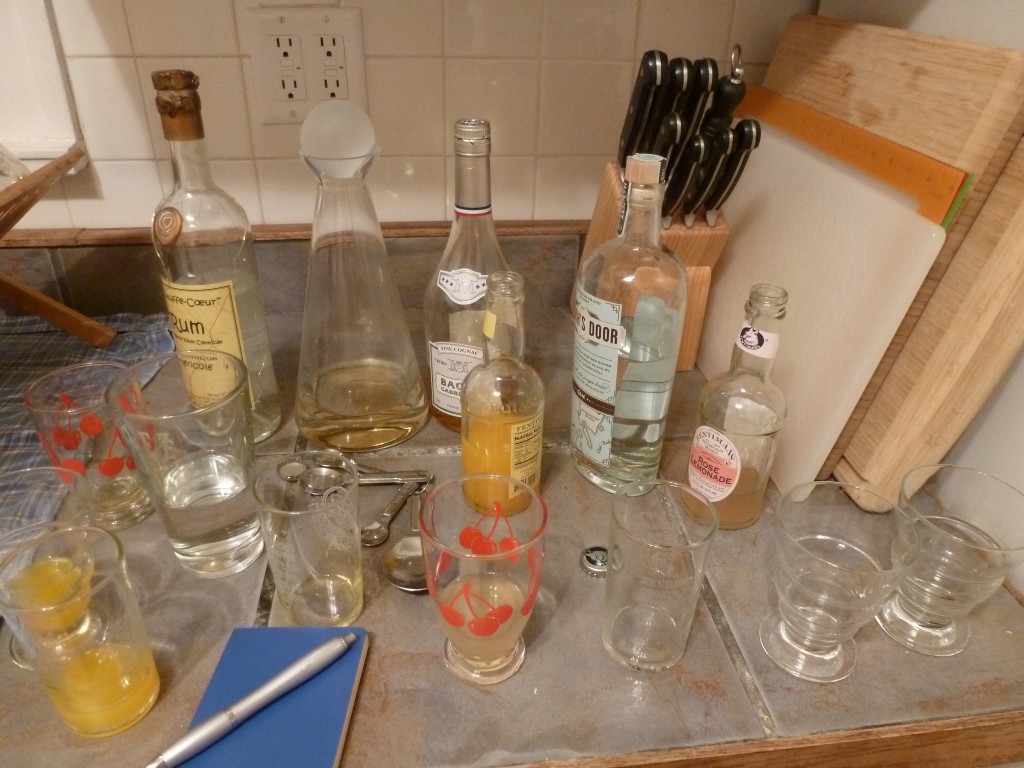Make Your Own Unusual Cocktail
 Experimenting with mixology is great fun, but with the vast array of booze and mixers at our disposal, it can be daunting. I floundered for years in the cocktail creation department, because I had no idea where to begin. I still flounder a bit today, honestly, but my experiments taste a heck of a lot better than they used to.
Experimenting with mixology is great fun, but with the vast array of booze and mixers at our disposal, it can be daunting. I floundered for years in the cocktail creation department, because I had no idea where to begin. I still flounder a bit today, honestly, but my experiments taste a heck of a lot better than they used to.
There aren’t any strict rules, but if you’re an aspiring mixologist, your cocktails have a much greater chance of being palatable if you keep a few basic guidelines in mind:
- Start with a key ingredient. It can be almost anything, really. Often, my key ingredient is something I need to get rid of, like a week-old lemon, or a bottle of mango juice taking up space in the fridge, or some fresh basil that didn’t make it into my marinara. Sometimes the key ingredient is a liquor or liqueur I want to try. Or maybe I just feel like having a cocktail with tequila (or whatever) in it.
- Decide on a main spirit. (If your key ingredient is a liquor, move on to #3.) If your key ingredient is herbal, bitter or floral, the botanicals in gin might complement it. If it’s sweet, using a sweet liquor like rum or tequila might be too much. If it’s citrusy, well, that can go with just about anything, including whiskey and cognac. If all else fails, choose vodka.
- Add something sweet. (If your key ingredient is sugary, move on to #4.) Some cocktails work very well completely dry, like a gin martini, but most drinks taste best to me with some sort of sugar, like fruit juice or simple syrup. It doesn’t have to be much. Like salt in your food, sugar helps bring out the other ingredients’ flavors. Without it, a cocktail can feel unbalanced or flat.
- Consider texture. Adding something sweet will tame the burn of a liquor, but usually that’s not enough to create a pleasing texture. Compare, for example, the texture of a vodka cranberry with the texture of a Cosmopolitan. It’s night and day, because the fresh lime juice in a Cosmo balances things out. Any fresh-squeezed citrus can serve this purpose, or vermouth can also be useful to round out a drink.
- Consider depth and complexity. If you taste your concoction and it seems too bright, add a dash of bitters. Bitters can do wonders to ground a cocktail. The wonderful Pegu Club would be a bit abrasive without bitters. Amari (bitter Italian liqueurs) have become very popular with bartenders as well. But it need not be something bitter. In the Cosmopolitan, Triple Sec rounds things out. Without this sweet orangey liqueur, a Cosmopolitan would seem too pointy.
- Work in small batches. In order to not waste booze when experimenting, I use a tablespoon as the measure of one part, rather than a shot glass. Once the proportions are to my liking, I scale up to proper cocktail size.
- Be brave! Work with fresh herbs, fresh fruits and unusual juices. Try infusing vodka with something. What’s the worst that could happen? After all, by the third or fourth sip, whatever you’ve made will taste just fine.
So there you have it — the basic formula: A main spirit, something sweet, something sour, and something round or bitter. Of course, there are countless ways to come up with a fine cocktail, but I find these guidelines invaluable.
I would love to hear about your own cocktail experimentation. Feel free to e-mail your recipes to contact@oddbacchus.com, post them to my Facebook page, or just write a comment below.
Happy mixing!





